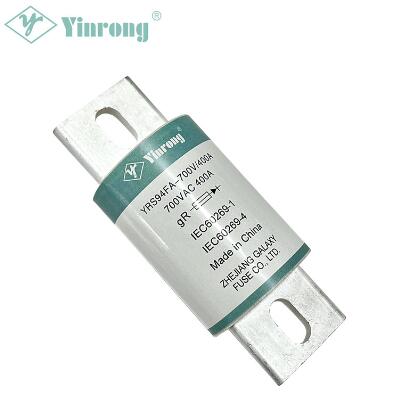Understanding High Speed Fuses: Key Differences from Standard Fuses
2024-06-13
In the world of electrical engineering and industrial applications, ensuring the safety and reliability of electrical systems is of paramount importance. One critical component in this safety framework is the fuse. While there are various types of fuses, High Speed Fuses and standard fuses are two categories that serve distinct purposes and applications. This blog will explore what a High Speed Fuse is and how it differs from a standard fuse.
What is a High Speed Fuse?
A High Speed Fuse, also known as a semiconductor fuse or ultra-fast fuse, is designed specifically to protect sensitive electronic components and circuits from overcurrent conditions. These fuses are characterized by their ability to respond extremely quickly to overcurrent events, making them ideal for applications where rapid protection is essential.
Key Characteristics of High Speed Fuses
1. Rapid Response Time: High Speed Fuses can interrupt fault currents within milliseconds, preventing damage to sensitive semiconductor devices such as diodes, thyristors, and transistors.
2. Low I²t Value: The I²t value represents the energy let-through by the fuse during an overcurrent event. High Speed Fuses have very low I²t values, which means they minimize the thermal energy passing through and reduce the risk of damage to protected components.
3. Current Limitation: These fuses limit the peak current during a fault condition, providing additional protection by reducing the mechanical and thermal stress on the circuit.
4. High Interrupting Capacity: High Speed Fuses are capable of safely interrupting high fault currents, ensuring robust protection for sensitive equipment.
What is a Standard Fuse?
A standard fuse, also known as a general-purpose fuse, is designed to protect electrical circuits by breaking the circuit when the current exceeds a certain threshold. These fuses are used in a wide range of applications, from household appliances to industrial machinery.
Key Characteristics of Standard Fuses
1. Moderate Response Time: Standard fuses have a slower response time compared to High Speed Fuses. They are designed to handle moderate overcurrent conditions but may not react quickly enough to protect highly sensitive electronic components.
2. Higher I²t Value: The I²t values of standard fuses are higher, allowing more energy to pass through during an overcurrent event. This is generally acceptable for protecting less sensitive equipment.
3. Current Limitation: While standard fuses do limit current during a fault, they are not as effective in doing so as High Speed Fuses. They are designed to protect against sustained overcurrent conditions rather than instantaneous spikes.
4. Lower Interrupting Capacity: Standard fuses typically have a lower interrupting capacity compared to High Speed Fuses, making them suitable for less demanding applications.
Key Differences Between High Speed Fuses and Standard Fuses
1. Application
- High Speed Fuses: Used primarily in applications involving sensitive electronic components such as semiconductors, inverters, and power supplies. They are critical in industrial automation, renewable energy systems, and electric vehicle infrastructure.
- Standard Fuses: Employed in a wide range of general electrical applications, including household wiring, lighting circuits, and basic industrial machinery.
2. Response Time
- High Speed Fuses: React within milliseconds to overcurrent conditions, providing immediate protection to prevent damage to sensitive components.
- Standard Fuses: Have a slower response time, which is sufficient for protecting less sensitive equipment from sustained overcurrent conditions.
3. Energy Let-Through (I²t Value)
- High Speed Fuses: Low I²t values minimize the thermal energy passed through during an overcurrent event, essential for protecting delicate electronic devices.
- Standard Fuses: Higher I²t values allow more energy to pass through, which is generally acceptable for protecting less sensitive components.
4. Current Limitation and Interrupting Capacity
- High Speed Fuses: Offer superior current limitation and have a high interrupting capacity, making them suitable for handling high fault currents in critical applications.
- Standard Fuses: Provide basic current limitation and have a lower interrupting capacity, making them suitable for less demanding environments.
Conclusion
High Speed Fuses and standard fuses serve distinct roles in the protection of electrical systems. High Speed Fuses are indispensable for safeguarding sensitive electronic components in high-stakes industrial applications due to their rapid response time, low I²t values, and high interrupting capacity. Standard fuses, on the other hand, are versatile and reliable for a broad range of general electrical applications, providing essential protection for less sensitive equipment. Understanding the differences between these two types of fuses is crucial for selecting the appropriate protective device for your specific needs, ensuring both safety and efficiency in electrical systems.



